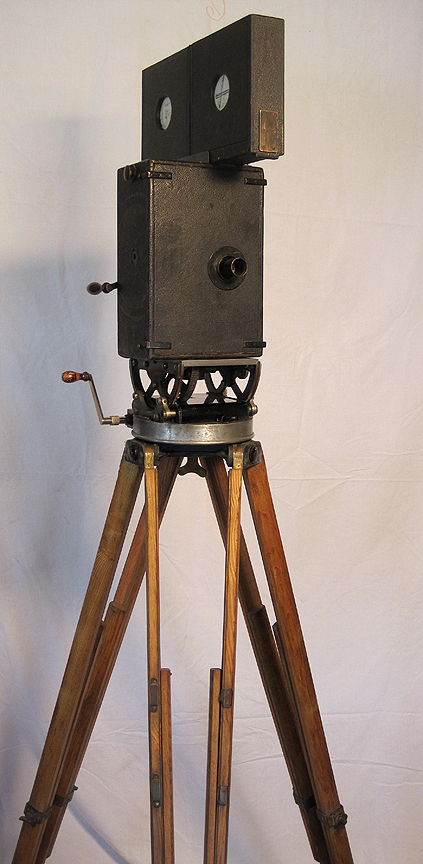
\
Pathe # 1345

In the years before WWI Pathe cameras worked on more movies than any other camera. They were the industry gold standard of motion picture cameras until the Bell & Howell 2709 took that coveted place from them later on. Billy Bitzer shot “Birth of a Nation” and “Intolerance” and every other movie he made for D.W. Griffith on a Pathe just like this one. |
----------------------------------------------------------------------
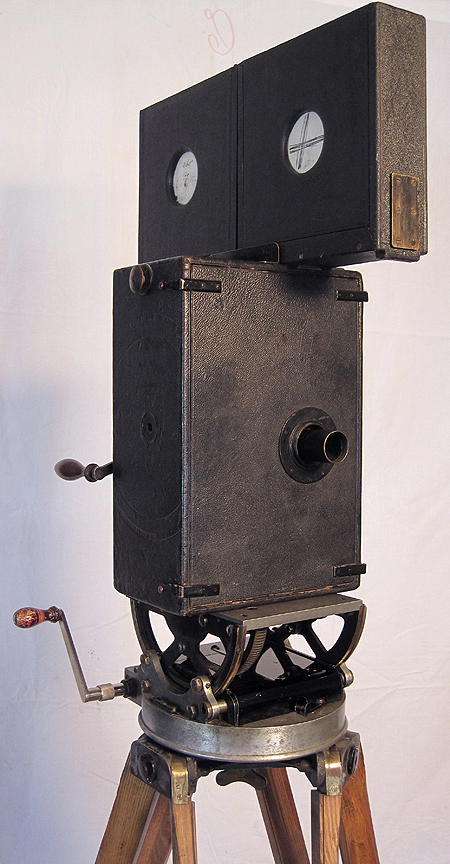
The Pathe' Brothers were some of the industry's first moguls, owning everything from the cameras to the studios and the theaters. They bought out the Lumiere brothers. The Lumieres were well known as the first manufacturers of a commercially successful motion picture camera. The Pathe movement and camera shape is the Lumiere Brothers design and stems from around 1895. At first Pathe shot with their own perforations so no one else could steal and exhibit their films. Piracy was a huge problem in the early days of film; come to think of it it's still a huge problem. In 1909 the industry made a standards and practice alliance and all agreed to work on the Bell and Howell 35mm perforations, a standard that is still used today. This camera will use today’s film. |
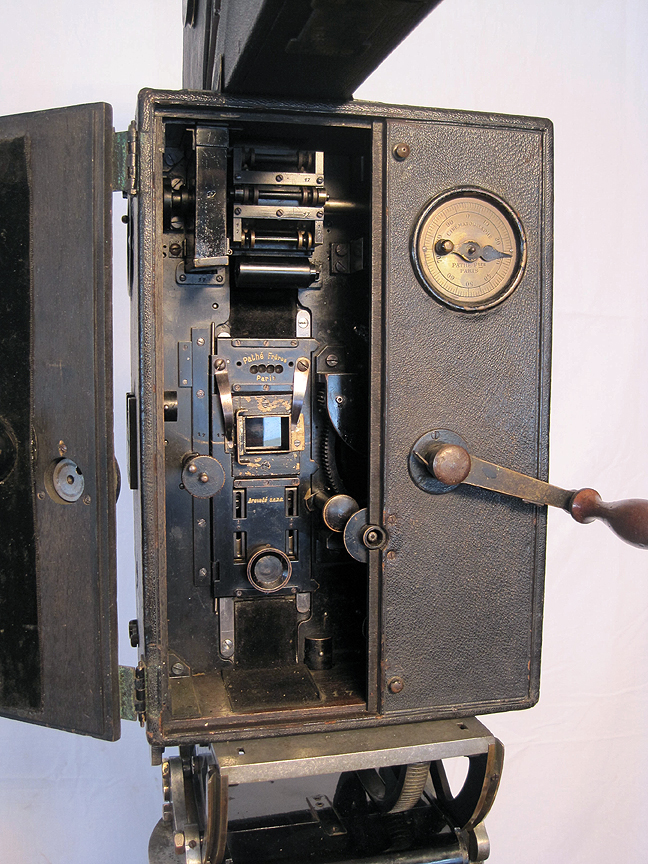
The camera has been cleaned well and lubricated well. It will shoot great footage today. It is a fine running camera and is quite clean and free of bronze disease. (Did you see the YouTube video?) |
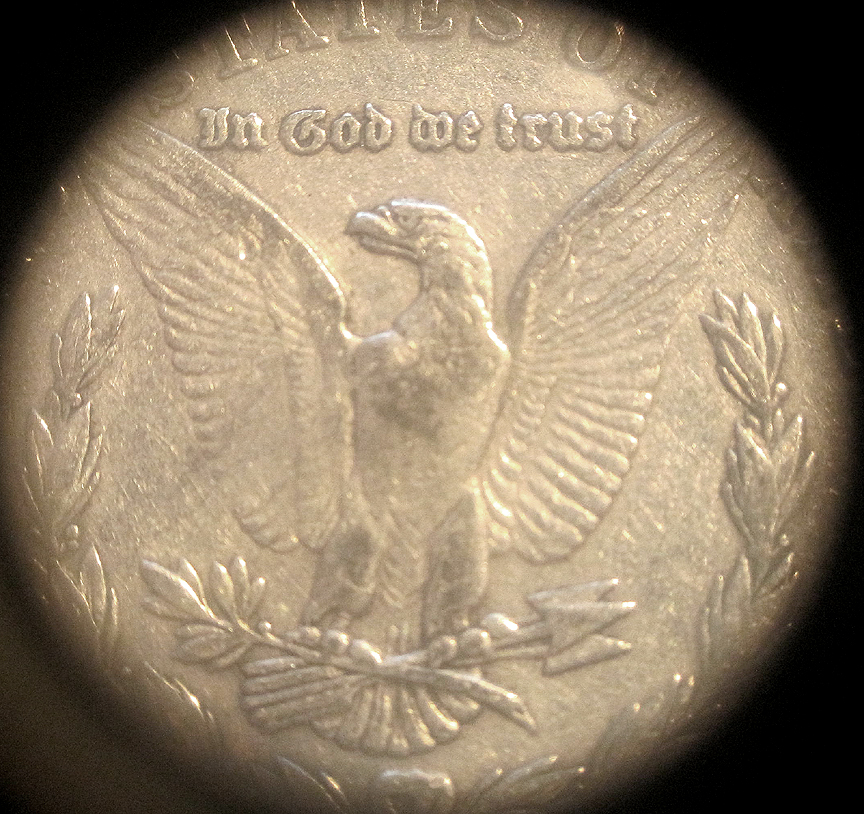
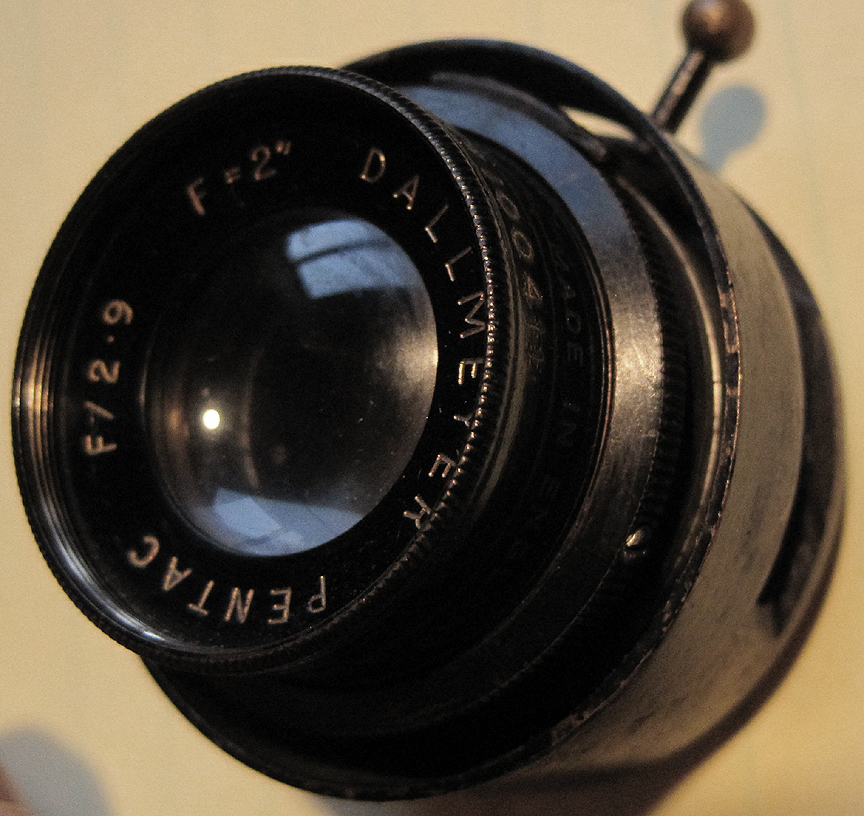
Lens: British Dallmeyer Pentac 2” or 50mm, F2.9. These lenses are selling for around $2,000 today. Dallmeyer Pentac lenses were made before WWI. During WWI all British manufacturing went to war materials. A Dallmeyer catalog from 1918 lists no cine lenses so I believe this camera has to be from before WWI. The lens is nice. The picture of the silver dollar was taken from my iPhone by just holding it up to the back of the lens. I’d shoot with it as it is and a simple cleaning would make it even better. The iris works smooth and easy. |
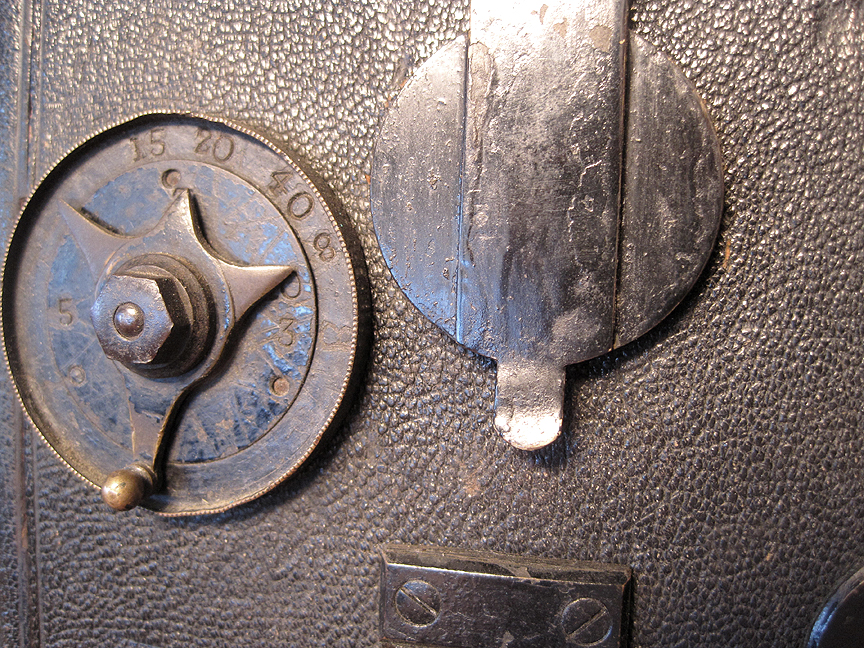
Focus was done by opening the circular door on the right in this picture and looking at the back of the film. The cameraman used the back of the film as a ground glass and then focused with the little knob just to the left of the viewing port. He knew he had focus locked in. |
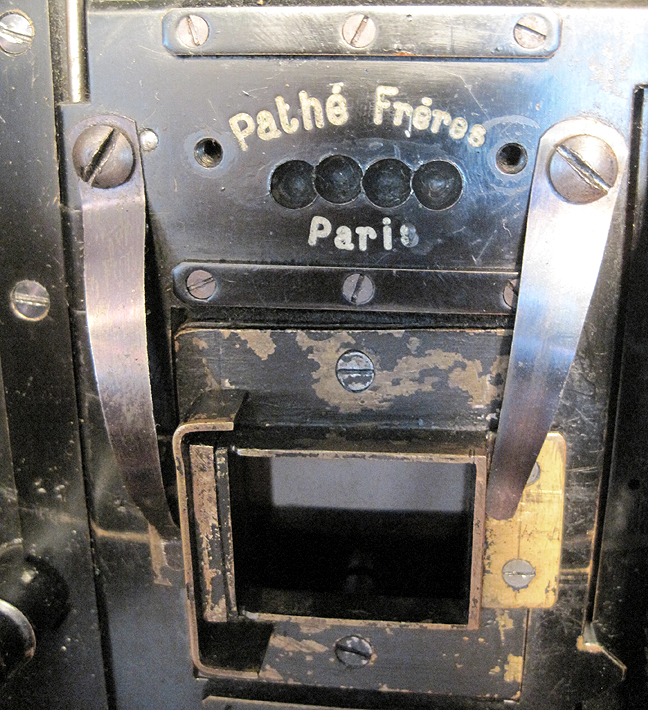
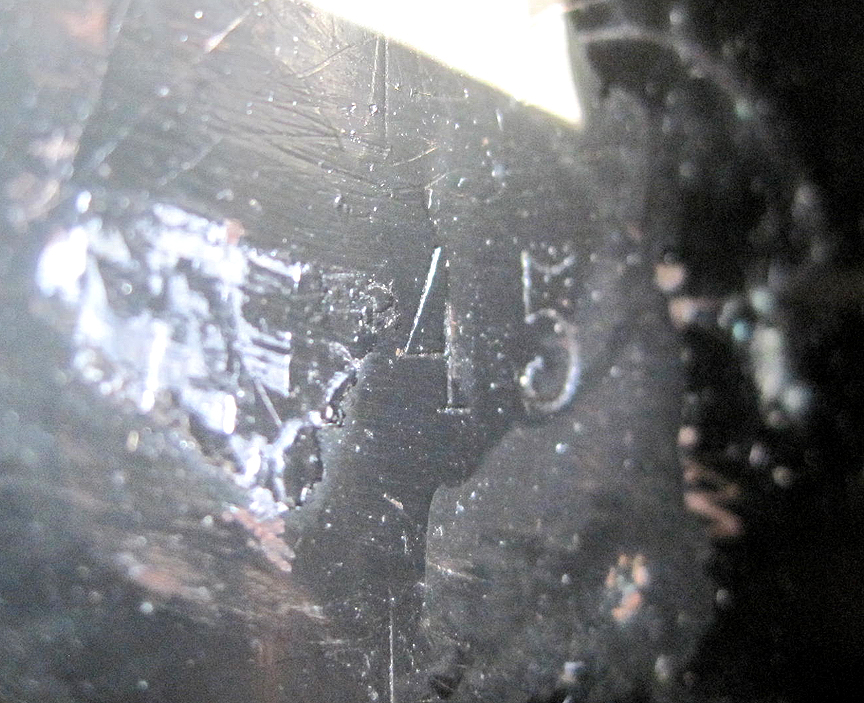
At one time this was a stolen camera as the serial number has been drilled out. A good friend has run the picture of the drilled area through several filters and magnification and with excellent deductive reasoning using the text around the pressure plate has come up with a serial number of 1345. Deep inside the body there was a serial number that the thief only partially removed. “45” can clearly be seen and a bit of the “3” so it can only be serial number 1345. |
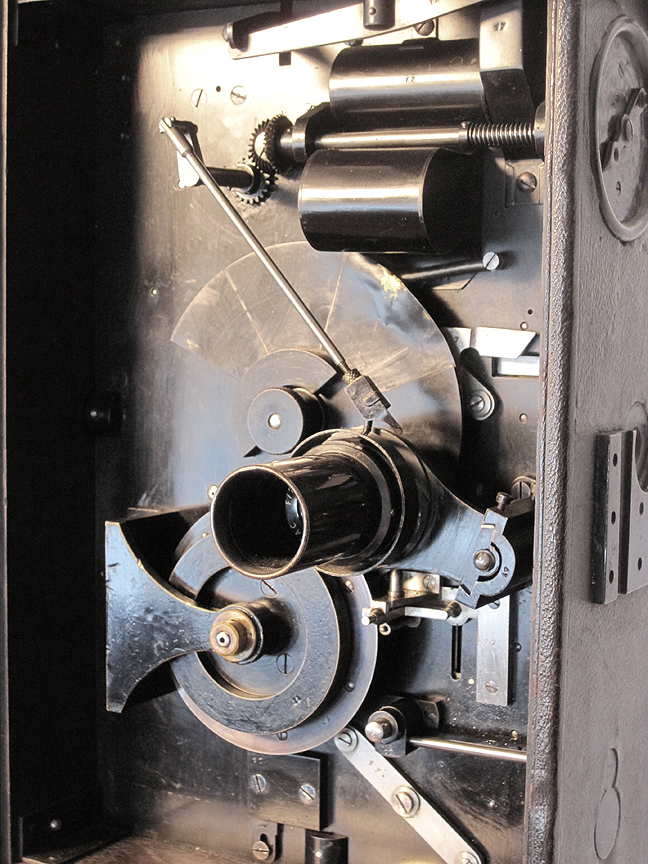
The Lumiere Brothers originally designed and patented this mechanism in the late 1890’s. The Pathe Brothers bought the patent from them and then manufactured their Pathe camera using that mechanism. |
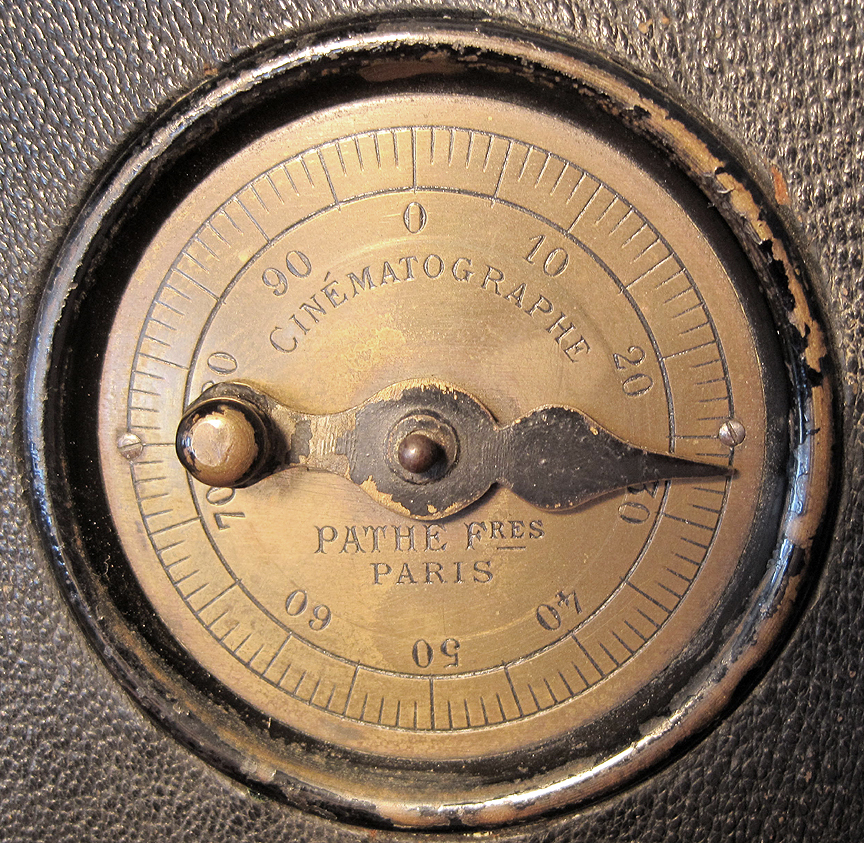
The footage counter is on the rear of the camera and still has its original needle pointer. The measurement is done in Meters. |
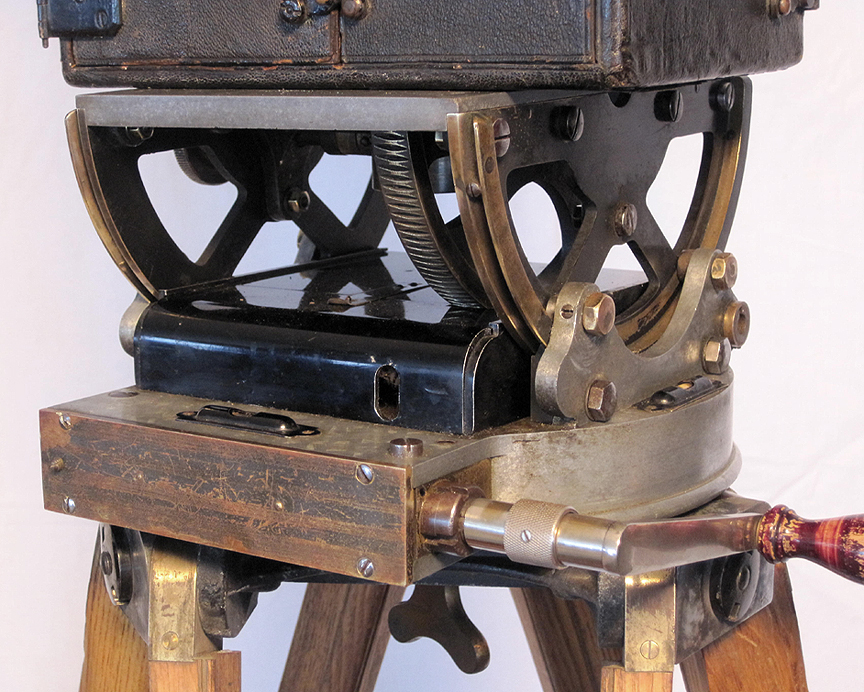
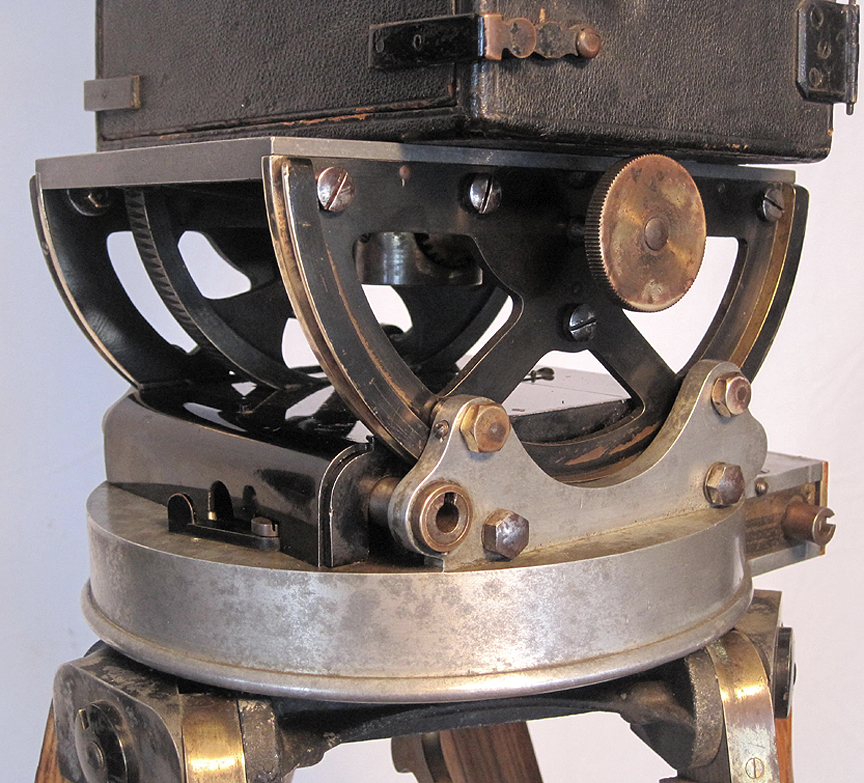
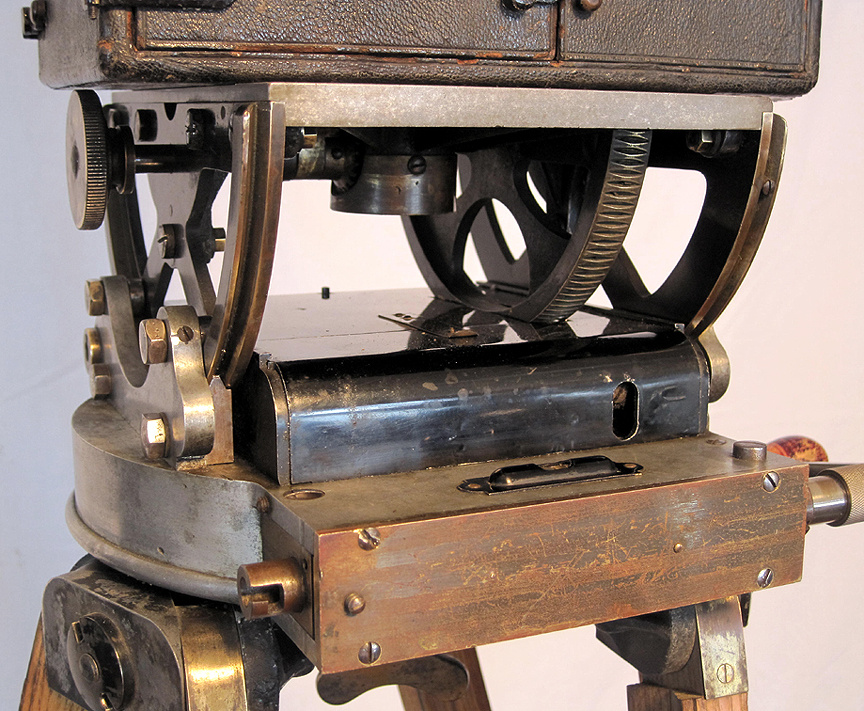
The head is unique. I’ve sent pictures of this head to all the collectors and historians I know and none have ever seen anything like it. It has one crank. The head has a gearshift on the tilt gear so the operator can shift into at least double speed in tilt. Most early scenes had no panning or tilting so it was just a matter of setting the scene quickly. I disassembled the head and cleaned all the dust and dirt out of it and then lubricated it. It’s a wonderful head. |
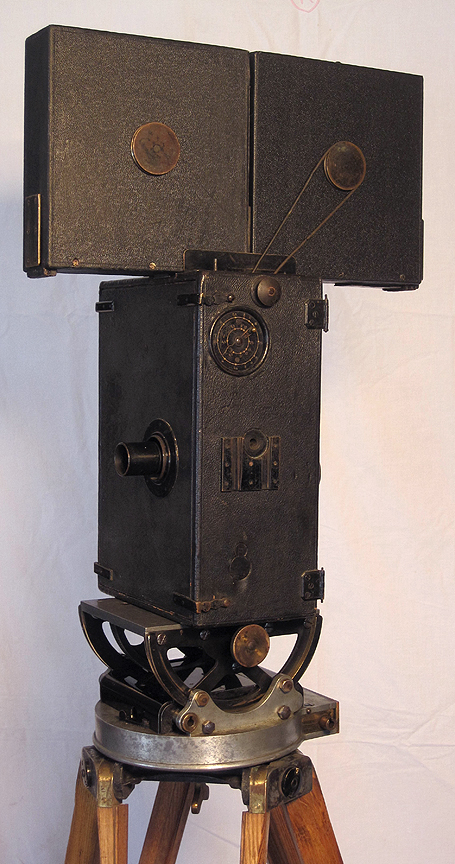
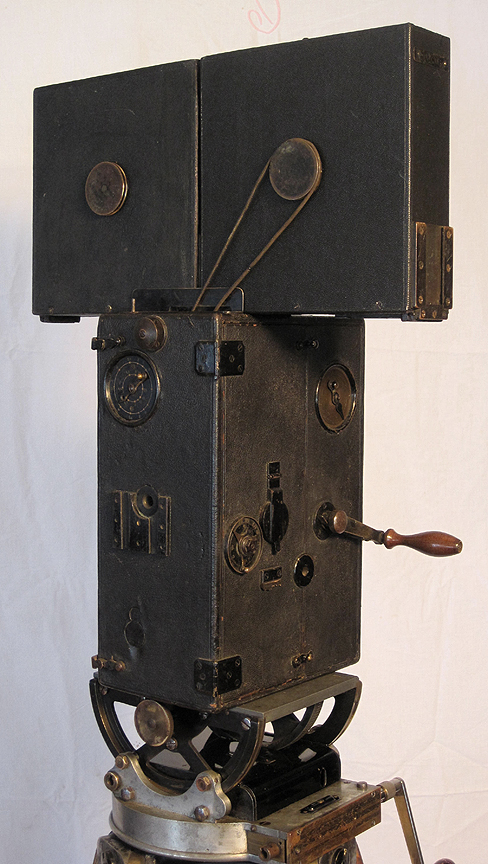
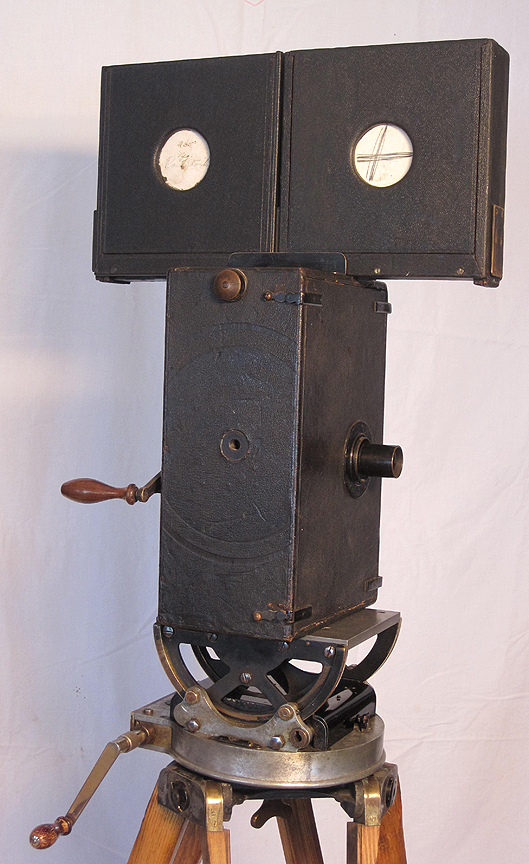
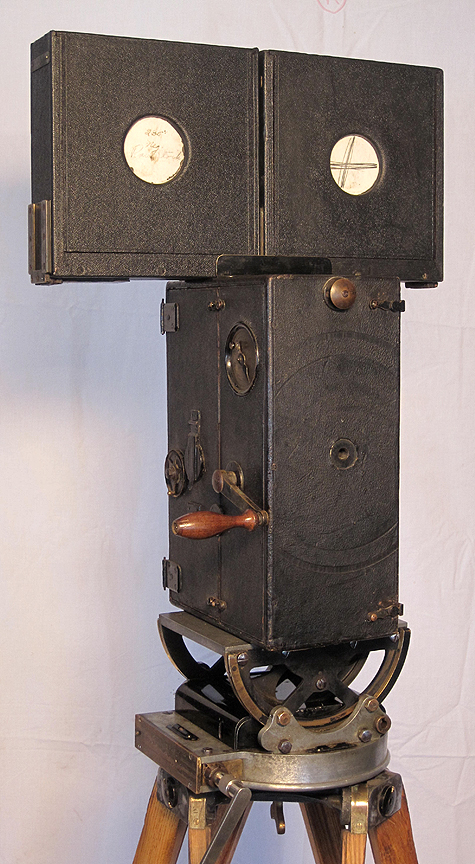
The Video: